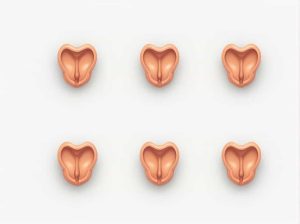The Golgi apparatus is a critical organelle in eukaryotic cells responsible for modifying sorting and packaging proteins and lipids. These packages enclosed in vesicles are then transported to different parts of the cell or outside the cell for various functions.
Understanding how the Golgi apparatus creates and processes these packages is essential to grasp the broader role of cellular communication secretion and homeostasis.
What Is the Golgi Apparatus?
The Golgi apparatus also called the Golgi complex or Golgi body is a stack of membrane-bound sacs that work like a processing and distribution center within the cell.
Structure of the Golgi Apparatus
The Golgi apparatus consists of:
- Cisternae – Flattened membrane-bound sacs where proteins and lipids are modified.
- Cis face – The receiving side of the Golgi apparatus where materials from the endoplasmic reticulum (ER) enter.
- Trans face – The shipping side of the Golgi where processed molecules are packaged into vesicles for transport.
Functions of the Golgi Apparatus
The Golgi apparatus is a highly dynamic organelle with several essential functions:
1. Protein Modification
Proteins synthesized in the rough ER are sent to the Golgi apparatus where they undergo modifications such as:
- Glycosylation – The addition of carbohydrate molecules to proteins.
- Phosphorylation – The addition of phosphate groups to regulate protein function.
- Sulfation – The attachment of sulfate groups to modify protein properties.
2. Lipid Processing
The Golgi apparatus is also involved in modifying and packaging lipids that are essential for cell membrane formation and signaling.
3. Vesicle Packaging and Transport
After processing proteins and lipids are packaged into vesicles for:
- Secretion outside the cell (exocytosis).
- Transport to organelles like lysosomes for digestion.
- Incorporation into the plasma membrane to maintain cell structure.
Types of Packages Created by the Golgi Apparatus
The Golgi apparatus produces different types of vesicles depending on their function:
1. Secretory Vesicles
These vesicles transport proteins and molecules that need to be secreted from the cell. Examples include:
- Hormones like insulin which regulate blood sugar.
- Neurotransmitters that send signals between nerve cells.
2. Lysosomal Vesicles
The Golgi apparatus produces lysosomes which contain digestive enzymes that break down waste materials and cellular debris.
3. Transport Vesicles
Some vesicles move materials within the cell delivering proteins and lipids to different organelles such as the plasma membrane mitochondria or nucleus.
4. Exosomes
Exosomes are small extracellular vesicles that help in cell communication and waste disposal playing a role in immune responses and disease processes.
The Golgi Apparatus and Protein Secretion
Many proteins synthesized in the cell must be exported for specific functions. The Golgi apparatus ensures these proteins reach their correct destinations through a well-organized process.
Steps in Protein Secretion
- Protein synthesis in the rough ER – Ribosomes assemble proteins and send them to the Golgi.
- Modification in the Golgi – Proteins undergo chemical changes to become fully functional.
- Packaging into vesicles – The processed proteins are packed into transport vesicles.
- Exocytosis – The vesicles fuse with the cell membrane and release their contents outside the cell.
This process is crucial for maintaining hormonal balance immune responses and neurotransmission.
The Role of the Golgi Apparatus in Cell Membrane Formation
The Golgi apparatus also contributes to maintaining the cell membrane by:
- Producing lipids that integrate into the membrane.
- Modifying membrane proteins that regulate cell function.
- Facilitating membrane repair by supplying necessary materials.
Golgi Apparatus and Cellular Homeostasis
The Golgi apparatus helps maintain balance in the cell by:
- Ensuring proper protein and lipid distribution.
- Recycling cellular components through vesicle transport.
- Assisting in immune system functions by packaging antibodies.
When the Golgi apparatus functions correctly the cell operates efficiently. However disruptions in Golgi function can lead to diseases.
Diseases Linked to Golgi Apparatus Dysfunction
Several health conditions arise from defects in Golgi function including:
1. Neurodegenerative Diseases
Disruptions in the Golgi apparatus have been linked to conditions like Alzheimer’s and Parkinson’s disease where protein processing and transport are impaired.
2. Cystic Fibrosis
A mutation in the CFTR gene prevents proper protein modification and transport leading to thick mucus buildup in the lungs.
3. Cancer
Alterations in Golgi function affect how cells grow and divide contributing to tumor formation and metastasis.
Understanding Golgi-related diseases helps in developing targeted treatments and therapies.
How to Keep the Golgi Apparatus Functioning Properly
Maintaining cellular health requires a combination of good nutrition hydration and lifestyle choices.
1. Eat a Balanced Diet
- Consume protein-rich foods like lean meat fish and legumes to support protein synthesis.
- Eat antioxidant-rich fruits and vegetables to prevent cellular damage.
2. Stay Hydrated
- Proper hydration ensures efficient vesicle transport and cell communication.
3. Reduce Stress
- Chronic stress affects overall cellular function including the Golgi apparatus.
4. Avoid Toxins and Harmful Chemicals
- Exposure to pollutants and toxins can damage the Golgi and affect protein processing.
A healthy lifestyle promotes optimal Golgi function and overall cellular health.
The Golgi apparatus plays a crucial role in modifying packaging and transporting proteins and lipids within the cell.
- It ensures that proteins reach their correct destinations contributing to cellular communication immune response and hormone secretion.
- The vesicles it creates include secretory vesicles lysosomal vesicles and transport vesicles that support various cellular functions.
- Proper Golgi function is essential for maintaining cellular homeostasis and overall health.
By understanding the importance of the Golgi apparatus and its packages we gain insights into cellular processes disease prevention and potential treatments.



